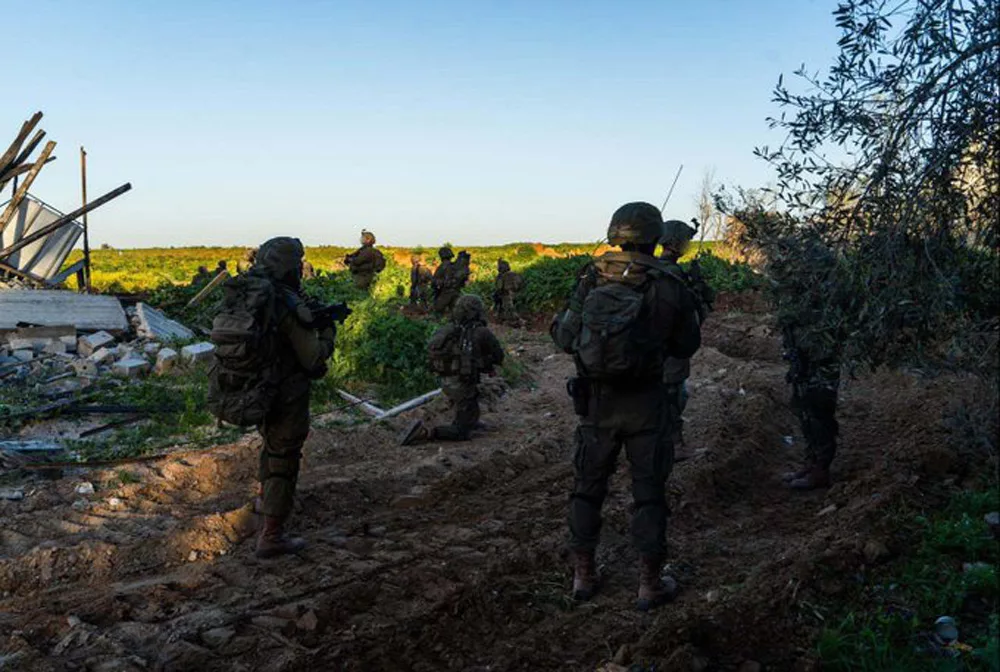
The White House on Monday claimed that Hamas leader Marwan Issa was killed during an Israeli operation last week.
During a press briefing, White House National Security Advisor Jake Sullivan said: “Israel has made significant progress against Hamas.”
He said: “They’ve broken a significant number of Hamas battalions, and killed thousands of Hamas fighters, including senior commanders. Hamas’s number three, Marwan Issa, was killed in an Israeli operation last week.”
“The rest of the top leaders are in hiding, likely deep in the Hamas tunnel network. And justice will come for them too, and we are helping to ensure that,” he said.
He confirmed the death of the Hamas leader just a day after IDF Chief of Staff Lt. Gen. Herzi Halevi said that Hamas was trying to hide Issa’s fate.
“We embarked on this operation after many days of complex planning, creating the operational conditions, and gathering sufficient intelligence. This is a very important achievement for the IDF. A capability we have built over the years together with the Shin Bet, a combination of high-quality intelligence and precise fire from the Air Force, which enables the elimination of senior officials underground,” Halevi said at a press conference as quoted by The Times of Israel.
“This attack is an expression of the IDF’s ability to reach the most complex places, at the right time, and with high precision. We will continue the effort to eliminate the senior officials. This is a major goal in the war,” Halevi said.
Who was Issa?
Issa had served as the deputy of Mohammed Deif, the head of Hamas’s military wing, the Izz ad-Din al-Qassam Brigades.
Together with Hamas’s leader in Gaza, Yahya Sinwar, they were believed to have masterminded the group’s October 7 massacre in southern Israel that triggered the ongoing war, reported The Times of Israel.
Issa, who was known as ‘Shadow Man’, rarely made public appearances.
Situation in Gaza
Amid reports that the Israeli military stormed Al-Shifa Hospital in Gaza City on Monday (March 18, 2024) in search of Hamas fighters, UN humanitarians warned that new food insecurity data indicates that famine could happen “anytime”.

“Famine is projected to occur anytime between now and May 2024 in the northern governorates,” the UN Food and Agriculture Organization (FAO) said, upon publication of a new Integrated Food Security Phase Classification (IPC) report on Gaza.
‘Act now to prevent the unthinkable’
“Palestinians in Gaza are enduring horrifying levels of hunger and suffering”, said UN Secretary General António Guterres outside the Security Council in New York, describing the IPC report as an “appalling indictment of conditions on the ground for civilians”.
“This is the highest number of people facing catastrophic hunger ever recorded by the Integrated Food Security Classification system – anywhere, anytime,” he added.
“This is an entirely man-made disaster, and the report makes clear that it can be halted,” he warned, saying this showed the need for an immediate humanitarian ceasefire.
“I call on the Israeli authorities to ensure complete and unfettered access for humanitarian goods throughout Gaza and for the international community to fully support our humanitarian efforts.
“We must act now to prevent the unthinkable, the unacceptable and the unjustifiable.”
Meanwhile, in response to the unfolding situation at Al-Shifa, UN World Health Organization (WHO) Director-General Tedros Adhanom Ghebreyesus insisted that “hospitals should never be battlegrounds.”
The lives of medical workers, patients and civilians were at stake, the WHO chief warned, adding that “minimal” health services had only recently been restored at Al-Shifa.
IPC: A key aid tool
IPC forecasts are compiled from on-the-ground assessments which humanitarians then use to respond to the most at-risk individuals.
Data indicates that the “entire population” of Gaza – some 2.3 million people – are enduring high levels of “acute” food insecurity. This includes 1.11 million suffering from “catastrophic” food insecurity – IPC Phase 5.
Grim hunger data
Compared to the last IPC analysis in December, acute food insecurity in the Gaza Strip has “deepened and widened”, FAO noted, with 79 per cent more Gazans likely “sliding into catastrophic levels of hunger” from mid-February to mid-March and 92 per cent more expected to do so between now and July.
“If no steps are taken to cease hostilities and to provide more humanitarian access, famine is imminent,” said FAO Deputy Director-General Beth Bechdol.
“It could already be occurring. Immediate access is needed to facilitate delivery of urgent and critical assistance at scale.”


